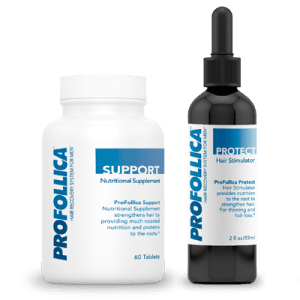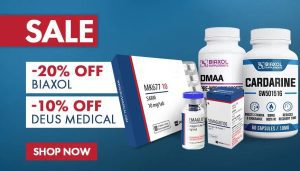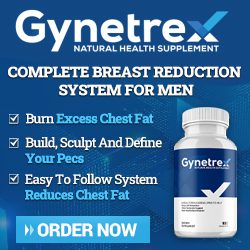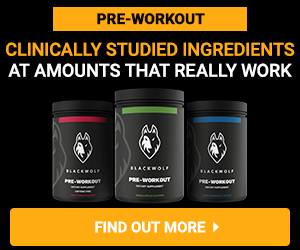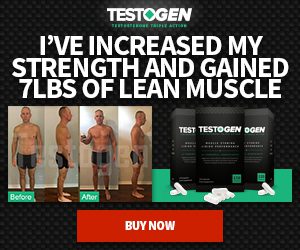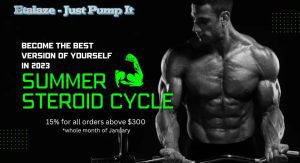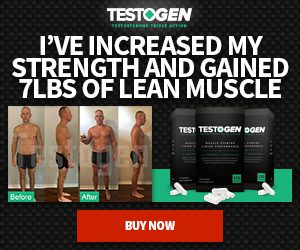Gain Weight
Meet the World’s Strongest Grannies

Aging, wrinkles, and lines are an inevitable part of this life. The aging process is associated with the loss of muscle mass, which is sarcopenia. This is the decline of muscle strength after one has reached 30 years, but it becomes more dramatic at 50 and beyond 60 years. When one's strength reduces, one tends to face high incidents of accident falls, as is seen among older adults who can compromise the quality of their life. Anti-aging therapy is essential as soon as possible.
Muscle building is one of the best ways to delay and prevent aging and improve longevity. It can also avoid or reduce symptoms of many chronic diseases that come with aging. Such as back pains, arthritis, diabetes, and depression, according to the center's disease control and prevention program.
Resistance training is one of the best ways to help slow muscle strength decline. It helps maintain muscle strength and power and makes everyday activities like cleaning, cooking, and climbing the stairs easier.
Muscle building also helps you improve bone density; this helps your bones to be strong. hence, when your body breaks down, it replaces it with new bone tissue. Without any exercise, your bone mass stops increasing with time. At 40s and 50, you start to lose more bone than you can make.
Anti-Aging Therapy
Older adults tend to have low cognition ability; they move and do most of their activities slowly. Muscle building helps improve cognition; this is the ability to shift quickly between tasks, ignore irrelevant information, and plan activities. According to the National Institute of Aging, these are all signs of good cognitive function. Studies have shown that physical activity is now the most promising method for improving cognition and reducing the risk of age-related cognitive decline.
Related Article:: Thyroid Hormones For Fat Loss In Women
The physical fitness of men and women is an excellent predictor of life expectancy for healthy people and those suffering from diseases like heart disease. Over the last several years, numerous epidemiological studies have reported a strong association between muscle building and physical fitness to the mortality index of the population. Being physically fit reduces all-cause mortality. When you improve your physical fitness, you reduce the risk of death by 44%. on the end of DNA strands. Their length decreases with aging, meaning the cells can no longer be able to divide.
Several studies.
As assessed by the manual dynamometer test, muscle building is considered a reliable marker of health and well-being and a good predictor of mortality and the expectancy of a person to live independently.
Trish Muldrok
Trish Muldrok is one of the most muscular women of her age. She had not picked up a dumbbell until her early 40s. When asked, Muldrok says that she discovered the sport by chance, or you can tell by accident, while she went to the gym for the first time at 42 years old to support a shy friend.
While at just 1.5 meters tall and weighing 46kg, the grandmother can lift three times her body weight. At 61 years old, Trisha Muldrock had won 17 world masters powerlifting championship gold medals and currently holds seven world records.
She holds the International Powerlifting Federation world masters, three of them between the ages of 60 and 69; women equipped records in the under 47 kg lass for the squat 115.5 kg, 136.5kg, and 316kg.
Willie Murphy
Willie Murphy is a 77-year-old woman from Rochester, New York. This 48 kg grandmother can do feats of strength that people her age might find challenging. She can do one-handed, hand, and fingertip push-ups without much struggle. In 2014, Willie won the coveted World Natural Powerlifting Federation Lifter.
She started doing lifting and exercises a few years ago when she saw a sign at her local YMCA for a weightlifting competition.
Mary Duffy
Mary Duffy, a 71-year-old grandmother from Trumbull in Connecticut, USA, started gym work at age 59 to lose weight and instead got hooked on lifting weights. She spends around 20 hours a week in the gym pumping iron and exercising and has achieved more than 30 state and world records.
This grandma holds world records for deadlifting 250lb, squatting 175lb, and benching 125lb. Mary says that going to the gym and working out helps her feel way better than she thought in her 40s.
Related Article: Top 4 Frauds About Steroids, HGH, and Anti-Aging
At 64 in 2014, Mary gathered enough courage to enter her first powerlifting competition. Despite training more than 20 hours a week, about six hours daily, people still judge her for her age. Initially, Mary attended the gym to lose weight, realizing she had put on a lot while mourning her mother's death. After losing weight, she realized training made her happier and that she enjoyed the activity.
Joan MacDonald
Joan McDonald is a 74-year-old who proved that it is never too late to make significant changes in your life. At 70, Joan was on multiple medications for acid reflux, high cholesterol, and high blood pressure. Doctors told her she needed to increase her dosage unless she drastically changed her lifestyle.
She knew she was ready to change her life as she was tired of taking the meds and feeling helpless. She shared her desire for Anti-Aging Therapy and to live healthier with her daughter Michelle. Michelle, pushing her to prioritize her health for years, enrolled her mom in an online workout program to help with her exercise.
Soon, she started taking walks as her form of cardio and weightlifting and even started practicing yoga. Today, MacDonald has lost 62 pounds, and her doctors have told her that she no longer needs to take the medication she was on.
She says she focused on building her strength and endurance when working out. It is not as easy as it may appear. A lot of commitment and patience are needed to achieve the overall result. Initially, she aimed to lose weight, but now she says she works out to feel strong. It is about challenging yourself to achieve more than you thought was possible.
It's all about hard work; MacDonald has launched a 'Train with Joan' website to influence others to follow her steps. Her advice to old women is that age is just a number, and there is no specific age you cannot start from.
Edith Murway's Anti-Aging Therapy
Edith Murway, the 100-year-old woman, becomes the world's oldest powerlifter. Despite her old age, Edith has impressed and inspired many people to start training. She says she gained the confidence to go to the gym from a friend who persistently encouraged her to start weightlifting and gave her the moral support she needed.
Many people her age often become weaker when they hit their 90s. But Edith still has the strength of a champion, inspiring many to start working out. She has also had a competition named after her in 2018, 'Edith Traina Inspiration.' Which is hosted for both young and old weightlifters.
Conclusion
Aging is a physiological process that can be delayed or accelerated with your chosen lifestyle. The most scientific evidence shows that physical fitness and muscle building is currently the best way to prevent or slow aging. Muscle building always brings benefits, irrespective of the age, sex, or health condition of the person undertaking it.
In contrast, lack of exercise accelerates aging, including one appearing older than they are. People who remain physically active eat the correct food and avoid risk factors. They tend to look younger and maintain a more youthful nature. Recent research has shown that muscle building and physical fitness are excellent predictors of quality of life. Their life expectancy and prevent those diseases that are associated with old age. In conclusion, Muscle building is the best medicine available today for aging. There is a lot that is not yet known regarding aging. But what we do know is that there is a lot of benefits in muscle building and exercising. The best thing is that it is never too late to start. You can begin your physical fitness at any age when you feel ready.
Must Read:: Urinary Incontinence and Bladder Health in Women over 40 Years old
Muscle building enhances your way of doing things and gives you more energy, irrespective of age. Nowadays old people can do the same activities as the young ones, due to physical fitness and eating the right food.
Bodybuilding
Demystifying Hypertrophy Training
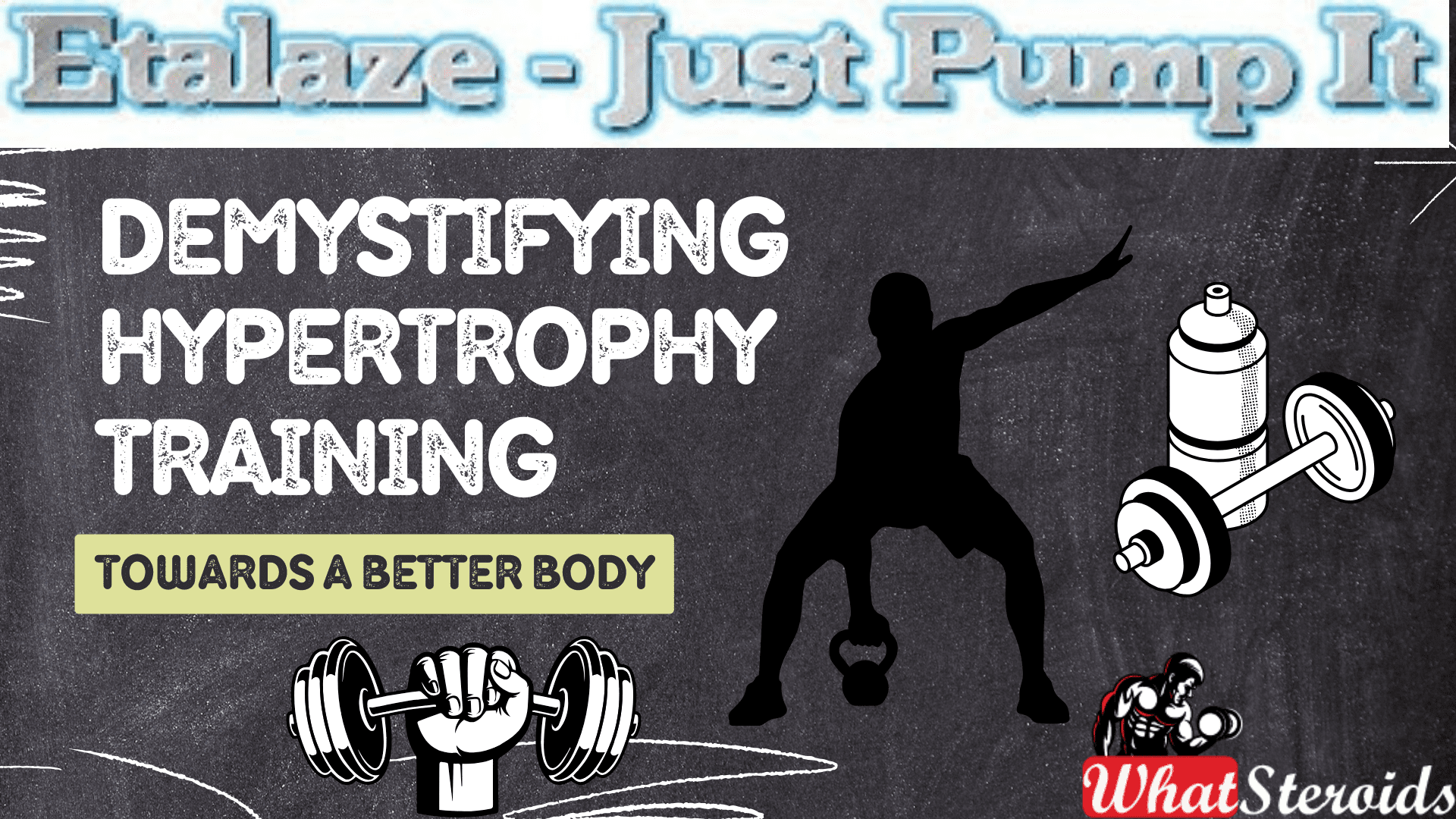
Hypertrophy training, often referred to as bodybuilding training, is a method focused on increasing muscle size and definition through targeted exercises and specific training techniques. Professional bodybuilders have mastered the art of hypertrophy training to sculpt their bodies into peak physical condition.
At its core, hypertrophy training involves lifting weights at a moderate to high intensity for a moderate number of repetitions. The goal is to create micro-tears in the muscle fibers, which then repair and grow stronger and larger during the recovery process. This leads to muscle hypertrophy or an increase in muscle size.
Understanding the basics of hypertrophy training involves knowing how to manipulate variables such as sets, reps, rest periods, tempo, and intensity. By adjusting these factors, individuals can tailor their workouts to target specific muscle groups and achieve optimal results.
Proper nutrition and adequate rest are also crucial components of hypertrophy training as muscles need sufficient fuel and time to recover and grow. Consistency in training and adherence to a well-rounded program are key pillars in unlocking the full potential of hypertrophy training.
Must Read: The Ultimate Chain and Plate Curls for Pumping Biceps
By demystifying hypertrophy training and embracing its principles with dedication and focus, individuals can effectively work towards achieving their desired physique goals while enhancing overall strength and endurance.
Principles of Hypertrophy Training
When you engage in strength training, you put strain on your muscles. This stress prompts the body to repair and adapt, resulting in an increase in muscle fibers. Here are the basics about this form of training you need to familiarise with:
Training Frequency
For new bodybuilders, a frequency of 3-4 times per week is often recommended to allow for sufficient recovery between sessions. Professional bodybuilders may train more frequently, sometimes up to 5-6 times per week, as their bodies have adapted to higher training volumes over time.
Intensity and Volume: New bodybuilders typically start with moderate intensity (around 65-75% of their one-rep max) and moderate volume (3-4 sets of 8-12 reps per exercise). Professional bodybuilders often incorporate higher intensities (75-85% of one-rep max) and higher volumes (4-6 sets of 8-15 reps per exercise) to continue stimulating muscle growth.
Exercise Selection
Both new and professional bodybuilders focus on compound exercises (e.g., squats, deadlifts, bench press) that target multiple muscle groups simultaneously to maximize muscle recruitment and overall hypertrophy. However, professionals may incorporate more isolation exercises to target specific muscles or muscle groups that need extra attention.
Progressive Overload
Both groups prioritize progressive overload, which involves gradually increasing the weight, reps, or sets over time to continue challenging the muscles and promoting growth. This can be achieved through methods such as increasing resistance, shortening rest periods, or varying exercise techniques.
Nutrition
Both new and professional bodybuilders emphasize the importance of nutrition for muscle growth and recovery. This includes consuming an adequate amount of protein to support muscle repair and synthesis, as well as sufficient carbohydrates and fats for energy and overall health.
Rest and Recovery
Adequate rest and recovery are crucial for hypertrophy training. Both new and professional bodybuilders prioritize getting enough sleep (7-9 hours per night) and incorporating rest days into their training schedules to allow muscles to repair and grow.
Supplementation
While both new and professional bodybuilders may use supplements to support their training and nutrition goals, professionals may have more sophisticated supplementation protocols tailored to their specific needs and goals. We recommend supplements such as protein powders, creatine, branched-chain amino acids (BCAAs), and pre-workout formulas.
Monitoring and Adjustments
Professional bodybuilders often closely monitor their progress through measurements such as body weight, body composition, and strength levels. Based on these assessments, they make adjustments to their training, nutrition, and supplementation protocols to continually progress towards their goals.
Arnold Schwarzenegger's Hypertrophy Workout Routine
Arnold Schwarzenegger's volume workout is a legendary approach to hypertrophy training that he popularized during his bodybuilding career. Here's an explanation of how his workout relates to hypertrophy training:
High Volume
Schwarzenegger's training program was characterized by high volume, involving a large number of sets and reps per workout. This high volume stimulates muscle growth by subjecting the muscles to prolonged tension and metabolic stress, both of which are key factors in hypertrophy.
Multiple Sets and Reps
Each exercise in Schwarzenegger's workout typically included multiple sets (often 4-5 sets) with a moderate to high number of reps (8-12 reps). This approach allows for ample time under tension, which is essential for stimulating muscle growth and hypertrophy.
Compound and Isolation Exercises
Schwarzenegger's workout included a combination of compound exercises (e.g., squats, bench press, deadlifts) and isolation exercises (e.g., bicep curls, tricep extensions) to target various muscle groups from different angles. Compound exercises help to maximize muscle recruitment, while isolation exercises allow for targeted muscle stimulation and hypertrophy.
Frequency
Schwarzenegger typically trained each muscle group 2-3 times per week, allowing for sufficient frequency to stimulate muscle growth while also providing adequate recovery time between sessions. This frequency helps to maximize hypertrophy by consistently exposing the muscles to growth-inducing stimuli.
Intensity Techniques
Schwarzenegger often incorporated intensity techniques such as drop sets, supersets, and forced reps into his workouts to further increase the intensity and stimulate muscle growth. These techniques help to push the muscles beyond their normal limits, triggering adaptations that lead to hypertrophy.
Periodization
Schwarzenegger employed periodization principles in his training, alternating between phases of higher volume and lower volume to prevent plateaus and continue making progress. This periodization strategy helps to optimize muscle growth by varying training stimuli over time.
Mind-Muscle Connection
Schwarzenegger emphasized the importance of the mind-muscle connection, focusing on contracting and feeling the target muscles working during each repetition. This approach helps to maximize muscle fiber recruitment and engagement, enhancing the effectiveness of each exercise for hypertrophy.
Nutrition and Recovery
In addition to his training program, Schwarzenegger paid close attention to his nutrition and recovery strategies to support muscle growth and hypertrophy. Adequate protein intake, proper hydration, and sufficient rest are essential components of any hypertrophy-focused training program.
Overall, Schwarzenegger's volume workout is a comprehensive approach to hypertrophy training that incorporates high volume, frequency, intensity techniques, and periodization to maximize muscle growth and achieve an impressive physique.
Also Read: Why Trenbolone Remains A Beast In The Market
10 Groups of Athletes That Can Benefit from Hypertrophy Workouts
We have prepared for you 10 groups of athletes that should consider hypertrophy training
1. Combat Sports Athletes
Martial artists, boxers, and other combat sports athletes can enhance their power and endurance through hypertrophy training.
2. Track and Field Athletes
Sprinters, jumpers, and throwers can improve their explosive strength by including hypertrophy training in their regimen.
3. Football/Soccer Players
Both American football players and soccer players can benefit from hypertrophy training to increase muscle mass and strength.
4. Gymnasts
Building lean muscle mass through hypertrophy training can help gymnasts improve their strength-to-weight ratio for better performance.
5. Swimmers
Swimmers can enhance their power in the water by incorporating hypertrophy exercises to strengthen key muscle groups.
6. Cyclists
While endurance is crucial for cyclists, adding hypertrophy training can boost leg strength and overall performance on the bike.
7. Basketball Players
Building muscle through hypertrophy training can improve basketball players' agility, jumping ability, and overall athleticism on the court.
8. CrossFit Athletes
CrossFit enthusiasts looking to excel in competitions can benefit from hypertrophy training to increase overall strength and muscular endurance.
9. Triathletes
Incorporating hypertrophy exercises into triathletes' routines helps prevent injuries by strengthening muscles that support joints during long-distance races.
10. Powerlifters
While powerlifting focuses on maximal strength lifts, including some hypertrophy work can aid in building a solid muscular foundation for lifting heavy weights more efficiently.
By tailoring a specific hypertrophy program to suit each group's athletic needs and goals, these athletes have the opportunity to optimize their performance levels while reducing the risk of injury associated with repetitive movements in sports-specific activities.
Final Thoughts
By understanding the underlying principles of progressive overload, volume, intensity, and frequency, individuals can tailor their training programs to effectively stimulate muscle growth. Whether you're a novice or a seasoned athlete, hypertrophy training offers a structured framework for optimizing muscle hypertrophy and sculpting a physique that reflects dedication, consistency, and strategic planning.
Embracing the science behind hypertrophy training empowers you as an individual to surpass limitations, break plateaus, and unlock their full potential in pursuit of their fitness aspirations. With proper guidance, commitment, and perseverance, anyone can harness the transformative power of hypertrophy training to sculpt a stronger, more resilient, and aesthetically pleasing physique.
Related Article: Post Cycle Therapy Vs. B&C: Which is Best for You?
Bodybuilding
Calorie Dumping: A Bodybuilder’s Guide

"Calorie dumping" in bodybuilding refers to a strategy where an individual consumes a large number of calories in a single meal, often following a period of low-calorie intake.
This practice is believed to support muscle growth by providing a surplus of energy and nutrients.
The idea is that after a period of restricted calorie intake, the body becomes more efficient at utilizing nutrients, making it more receptive to absorbing and utilizing the surplus calories in a short period.
However, this approach may not suit everyone and should be approached cautiously as it can lead to discomfort and potential digestive issues.
Calorie dumping, also known as refeeding or cycling calories, is sometimes preferred by bodybuilders to help prevent metabolic adaptation and aid in breaking through plateaus.
By occasionally consuming higher calorie levels, they aim to boost metabolism, replenish glycogen stores, and maintain hormone balance for better muscle growth and fat loss in the long term.
Bodybuilders focus on controlled nutrition plans to optimize muscle growth and minimize fat gain. However, occasionally, you might increase the calorie intake temporarily before an intense workout or competition to boost energy levels, but this isn't considered calorie dumping in the traditional sense.
ALSO READ: Your Guide to Become A Successful Personal Trainer
Long-term and Short-term Benefits of Calorie Dumping
Short-term benefits include replenishing glycogen stores, boosting metabolism, and providing mental relief from a strict diet.
Also known as a "refeed" or "cheat day," bodybuilders do calorie dumping for several long-term reasons:
Best Foods for Calorie Dumping
Beginners
Tren Cycle for Beginners

Bodybuilders must have a clear approach to the tren cycle for beginners. Trenbolone is a potent steroid that should be cautiously and properly researched.
For beginners, starting with a lower dosage and gradually increasing it over time is recommended. This allows the body to adjust to the effects of trenbolone and helps minimize the risk of potential side effects.
Start With A Plan
It is also important to have a well-structured cycle plan in place. This includes determining the cycle duration, dosages, and frequency of administration. Consulting with a knowledgeable healthcare professional or experienced trainer can provide valuable guidance in creating an effective cycle plan.
Additionally, proper nutrition and training protocols are essential during a trenbolone cycle. A balanced diet of protein, carbohydrates, and healthy fats will support muscle growth and recovery. Combined with an appropriate workout routine tailored to individual goals, this can maximize the benefits of the trenbolone cycle. Remember that safety should always be a priority when using any steroid.
Educating oneself about potential side effects, risks, and proper usage guidelines is crucial before embarking on a trenbolone cycle or any other steroid regimen. You're right! Proper nutrition and training protocols are crucial when using trenbolone or other steroid. A balanced diet is important to provide the necessary nutrients for muscle growth and recovery. Including sources of protein, carbohydrates, and healthy fats can support your body's needs during the cycle.
Additional Reading:: Supplemental Breast Milk for Bodybuilders: The Secret Behind It
Tailor Your Training Routine To Individual Goals
In terms of training, having an appropriate workout routine tailored to your individual goals is key. This can help optimize the benefits of the trenbolone cycle by ensuring that you're targeting specific muscle groups and incorporating exercises that promote strength and hypertrophy.
Dig Out More Information
However, it's important to prioritize safety when using any steroid. Before starting a trenbolone cycle or any other steroid regimen, educating yourself about potential side effects, risks, and proper usage guidelines is essential. This will help you make informed decisions regarding dosage, duration of use, and post-cycle therapy (PCT) to minimize potential risks.
Furthermore, consulting with a healthcare professional or qualified fitness expert with steroid experience can provide valuable guidance throughout your journey. They can monitor your progress, address any concerns or questions you may have. Always remember that responsible use of steroids involves thorough research, consideration of potential risks/benefits ratio, and being mindful of your overall health and well-being.
The Frequency of Tren Cycle for Beginners
When it comes to cycling Trenbolone, there are several factors to consider. The frequency of the Tren cycle for beginners can vary depending on individual goals, experience level, and tolerance to the compound. Typically, Trenbolone cycles range from 8 to 12 weeks in length. However, some advanced users may extend their cycles up to 16 weeks.
It's important to note that Trenbolone is known for its strong side effects, including potential cardiovascular strain, suppression of natural testosterone production, and liver toxicity. Therefore, using this steroid responsibly and following proper cycling protocols is crucial.
Many experienced users recommend starting with a lower dosage during the first cycle to assess how your body responds to Trenbolone. Incorporating post-cycle therapy (PCT) after completing a Trenbolone cycle is also advisable to help restore hormonal balance and minimize potential side effects.
Ultimately, beginners' frequency of the tren cycle should be determined based on individual goals, understanding of the compound's risks and benefits, and consultation with a knowledgeable healthcare professional or experienced steroid user.
Tren Cycle for Beginners Steps
When using trenbolone (tren) for beginners, it is important to understand the step-by-step procedure clearly. Tren is a powerful anabolic steroid that should be cautiously approached, especially for those new to using performance-enhancing substances.
Before starting a tren cycle, it is essential to consult with a healthcare professional or an experienced fitness expert who can provide guidance and monitor your progress throughout the cycle. They can help determine if you are ready for this level of supplementation and ensure your safety.
The step-by-step procedure for a tren cycle typically involves the following:
1. Research and Education: Thoroughly research tren and its potential benefits, risks, and side effects. Understand how it interacts with your body and what precautions must be taken.
2. Establish Goals: Clearly define your goals for using tren, whether it's gaining muscle mass, increasing strength, or improving athletic performance. This will help guide your dosage and duration of the cycle.
3. Dosage Determination: Start with a low dosage to assess how your body reacts to tren. Beginners start with around 50-100mg per week, split into several smaller doses.
4. Cycle Duration: A typical beginner's tren cycle lasts 8-12 weeks. It's important not to exceed this timeframe as prolonged use can increase the risk of side effects.
5. Supportive Supplements: Consider incorporating supplements such as liver support agents or testosterone replacement therapy (TRT) during your cycle to mitigate potential adverse effects on liver function or natural testosterone production.
6. Monitoring Progress: Regularly monitor your progress during the cycle through objective measures such as body composition analysis, strength gains, and overall well-being.
7. Post-Cycle Therapy (PCT): After completing the Tren cycle, implement an appropriate post-cycle therapy protocol to help restore natural hormone production and minimize any potential side effects associated with discontinuing Tren use.
Where to Source Your Tren
When purchasing trenbolone, it is important to prioritize safety and legality. Trenbolone is a controlled substance in many countries, and its sale without a prescription is prohibited. Therefore, being cautious and ensuring you purchase from a reputable source is crucial.
One of the most reliable options for buying trenbolone is through licensed pharmacies with proper prescriptions, such as Etalaze.biz. These pharmacies adhere to strict regulations and quality control measures, ensuring you receive genuine products.
However, it's important to note that using trenbolone for non-medical purposes, such as bodybuilding or performance enhancement, may not be legal in some countries. In such cases, attempting to purchase trenbolone from underground or illicit sources can pose serious risks to your health and legal consequences.
It is always recommended to consult with a healthcare professional or an authorized medical practitioner who can guide you on the appropriate usage and legal avenues for obtaining trenbolone based on your specific circumstances.
Tren Cycle for Beginners Take Away
Beginner bodybuilders need to understand the approved dosage guidelines when using trenbolone, a powerful anabolic steroid. Trenbolone is known for its potency and effectiveness in promoting muscle growth and strength gains. However, it is crucial to cautiously approach Tren Cycle for Beginners due to its strong nature.
For beginners, starting with a lower dosage of trenbolone is generally recommended to assess their tolerance and response to the compound. The approved dosage for beginner bodybuilders typically ranges from 50mg to 100mg per week. This conservative approach allows individuals to gradually introduce trenbolone into their system while minimizing the risk of potential side effects.
It is important to note that every individual may respond differently to trenbolone, and factors such as age, weight, fitness level, and overall health should be considered when determining the appropriate dosage. It is always advisable for beginners to consult with a knowledgeable healthcare professional or experienced coach who can provide personalized guidance based on their specific circumstances.
Additionally, regardless of experience level, it is crucial for all users of trenbolone or any other anabolic steroid to prioritize proper cycle support and post-cycle therapy (PCT) protocols. These measures help mitigate potential side effects and ensure a safer and more effective experience with trenbolone.
In conclusion, when using trenbolone as a beginner bodybuilder, adhering to approved dosage guidelines ranging from 50mg-100mg per week is essential. Consulting with healthcare professionals or experienced coaches can provide valuable insights tailored to individual needs. Prioritizing cycle support and PCT protocols further contributes to optimizing safety and effectiveness during the usage of this potent anabolic steroid.
-

 Bodybuilding2 years ago
Bodybuilding2 years agoNew Arrival Workout Equipment on Amazon for The Disabled
-

 Steroids2 years ago
Steroids2 years agoSupplemental Breast Milk for Bodybuilders: The Secret Behind It
-

 Steroids2 years ago
Steroids2 years agoDwarf Bodybuilders Giving Pros A Run for Their Money
-

 Steroids1 year ago
Steroids1 year agoVOX Testing: Why Bodybuilders Must Have It Tested Regularly
-

 Steroids1 year ago
Steroids1 year agoShavers and Other Body Grooming Equipment for Bodybuilders In 2023
-

 Steroids1 year ago
Steroids1 year agoChatGPT and Other Avenues to Find Great Bodybuilding Coaches
-

 Steroids1 year ago
Steroids1 year agoBest Oil Recommendations Before Competition for Subtle Shimmer
-

 Steroids1 year ago
Steroids1 year agoPowerlifting Vs Power Building: Find Out the Big Difference and When to Shift Between the Two
-

 Beginners12 months ago
Beginners12 months agoTren Cycle for Beginners
-

 Bodybuilding11 months ago
Bodybuilding11 months agoCompetition Prep Cycle for Pro Bodybuilders
-

 Nutrition9 months ago
Nutrition9 months agoEverything Nutritional Food: What’s Too Much Or Too Little
-

 Anabolic Steroids8 months ago
Anabolic Steroids8 months agoLegality of Anabolic Steroids In Latin America
-

 Bodybuilding8 months ago
Bodybuilding8 months agoChia Seeds in A Bodybuilder’s Diet: An Expert’s Advice
-

 Bodybuilding6 months ago
Bodybuilding6 months agoList of FDA-Approved Peptides
-

 Anabolic Steroids9 months ago
Anabolic Steroids9 months agoNatural Steroids for Bodybuilding
-

 Anabolic Steroids7 months ago
Anabolic Steroids7 months agoStart The New Year Strong With These Tips
-

 Beginners9 months ago
Beginners9 months agoCalisthenics: Secret to Building A Better Upper and Middle Body
-

 Bodybuilding7 months ago
Bodybuilding7 months agoUnique Things That Have Redefined Mr Olympia Over The Years
-

 Steroids5 months ago
Steroids5 months agoTrenbolone: Why it Remains A Beast In the Market
-

 Bodybuilding Products4 months ago
Bodybuilding Products4 months agoTelmisartan In Bodybuilding: An Expert’s Advice
-

 Bodybuilding5 months ago
Bodybuilding5 months agoThe Importance of Scaptions in Female Athletes
-

 Bodybuilding4 months ago
Bodybuilding4 months agoHow Much Is Too Much Cardio? Understanding Heart Rate Zones
-

 Bodybuilding6 months ago
Bodybuilding6 months agoFunny Gym Stories and Moments to Light Up Your Day
-

 Steroids8 months ago
Steroids8 months agoThese Bodybuilding Equipment Might Become Obsolete Next Year (See Alternative Upgrades)
-

 Bodybuilding7 months ago
Bodybuilding7 months agoCalorie Dumping: A Bodybuilder’s Guide



